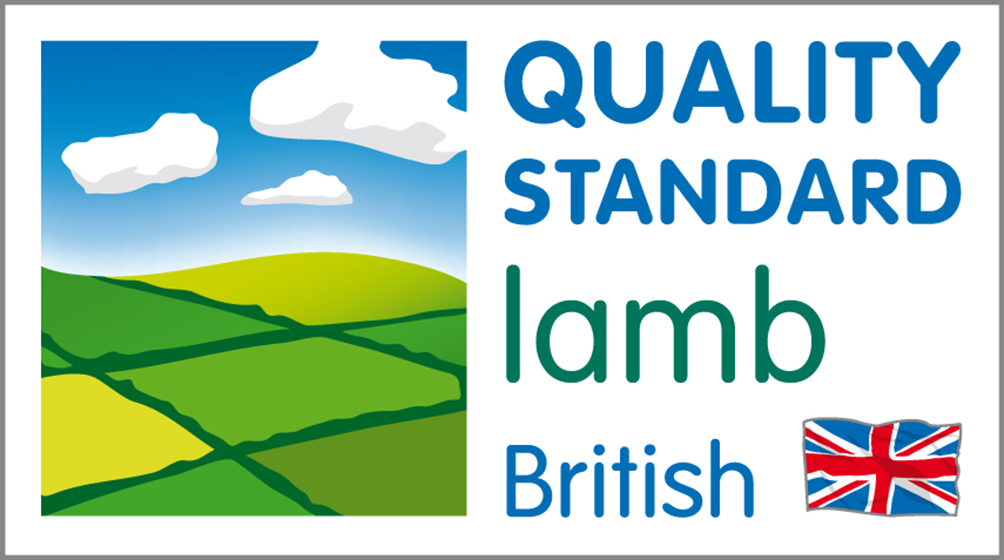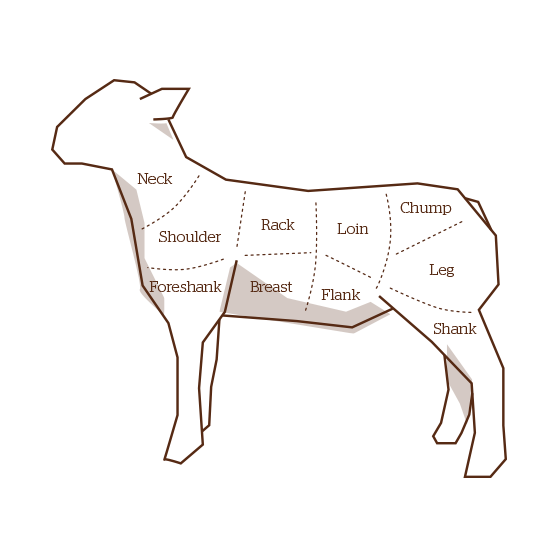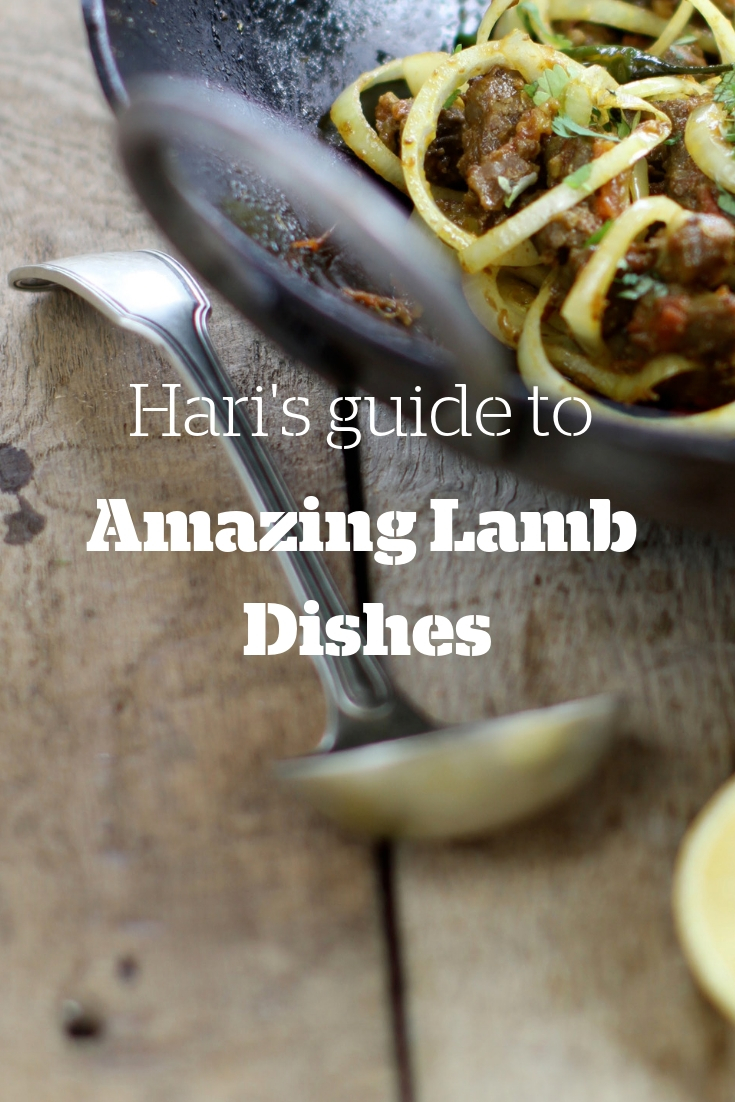Buying Lamb
Always ensure you go for meat where the animals have been cared for and looked after well. This will ensure that the meat is the best quality it possibly can be. As with all meat go for free range or organic where ever possible. Other certifiactes of higher-welfare include RSPCA approved or Humane are a good guide as well.
For an eating quality guarantee look for butchers stocking Quality Standard Mark Beef and Lamb. Tough Standards – Tender Results

To find a QSM butcher in your area enter your postcode here: Local QSM Butchers
Different cuts of meat have different properties because the muscles of the animal will have worked differently. It helps to understand this so you know how to treat the different cuts when you cook with them.
Using Lamb in Indian Cooking
Lamb is only lamb if it has been used for meat within its first year. Older then tweleve months the animal is known as a hogget or and old season lamb. It's only at about a year and a half when it gets its first incisor tooth that it becomes mutton. Season lamb is a very tender meat but the meat from an older animal has a much more developed flavour and requires more cooking time to ensure the meat is soft.
Many Indian meat dishes are slow cooked which is why it lends itself to using mutton. As this has to be cooked slowly the flavours develop gently and results is some wonderful sauces. Meat also tends to be butchered on the bone which meats that the slow cooking combined with the flavours from the bone results (in my opinion) a richer, fuller gravy that is meaty and delicious. For Indian dishes it is really important that you trim the meat removing the excess fat to avoid a greasy, oily finish to your sauce. In India itself lamb is seldom used because those who do eat meat prefer the meat to be very lean so they tend to use young goat meat even though they call it lamb.
Cuts
Neck or scrag end
This is great for slow cooking and is usually a bony part that is chopped into thick slices. The neck fillets also come from this are the same muscle but taken off the bone. The neck fillet is brilliant for curry and stew. These cuts have always been a bit underrated so are significantly cheaper then other cuts. Personally I love a bit of neck fillet and unusually it can also be used as a steak and cooked quickly over a high heat too. I love to use neck fillet in my Lamb cooked with Shallots recipe.
Shoulder
This is usually sold as a whole or half a shoulder and tends to be quite fatty and because this is the part of the animal that has worked hard the meat can be fibrous but full of flavour. It is perfect for slow cooking and stewing. With curries it give a great flavour but can be fatty so make sure you trim it and be prepared to skim off the fat. White Goat Curry works well with a shoulder cut.
I love to cook lamb shoulder on the bone, low and slow for up to 6 hours either marinated or rubbed with spices until the meat just falls away. This is also where mince lamb usually comes from.
Best End
Called best end as it's where the most tender cuts come from.
Rack/Cutlet
The first 8 ribs or 'The rack' served together is called the rack. Cut individually they are cutlets or or chops and they are super tender and really delicious. Usually served pink they are perfect for quick cooking on a griddle. To serve the 'French way" the meat is scraped and trimmed back from the rib to expose the bone. This is one of my favourite ways of cooking cutlets Pudina Lamb Cutlets.
Loin
This part of the animal comes from the wait and are small T-bone steaks with the loin on one side and the steak on the otherside. The chops which are great for grilling and I think they lovely in curries (providing you don't mind bones). These Spicy Lamb Chops are with a salad in the summer.
Chump / Rump
This comes from the part where the lower back meets the leg so it's a lean cut that is really flavoursome. Because it's a lean cut this can dry out quickly and become tough if over cooked. The chops and steaks from here are usually off the bone and great to add a tandoori marinade and cook on the BBQ.
Leg
The leg can be cooked whole and roasted in the oven or trimmed and cut into chunks for curries and stews. Another hard working part of the animal it is full of flavour but because it is much more lean then the shoulder make sure you dont over cook it. The leg makes a great joint for weekend family get togethers and this Bhuna is just perfect for it.
Shank
The shank is the lower part of the back legs and its really cheap to buy. The shank really needs to be cooked slowly or braised for a few hours so the meat becomes super soft and delicate. It works really well in low and slow Indian sauces such as this amazing Slow Cooked Shank dish.
Breast
A fairly fatty cut which is best roasted slowly to leave a lovely tasting meat. This Kashmiri Tabak is made from the breast meat.
Mince
Always go for mince that has more red meat then white fatty bits (cheap lamb mince can be very fatty). It's always a good idea to ask the butcher to mince a piece of meat for you (or do it yourself). For some nice mince that's full of flavour go for scrag, neck or belly. Shoulder is also good, but for a leaner mince try mixing it from a cut like leg which is less fatty. I love lamb mince and I use it in lots of dishes from Lamb Kebabs to my Keema Pie and my favourite Keema.
My Interactive E-book - Amazing Lamb Dishes
My new interactive e-book is full of information, videos, spice details and new recipes all in one place. It's easy and fun to use and only costs £4.99 so download it here and get cooking some amazing dishes.
Back to Cooking guides


Comments